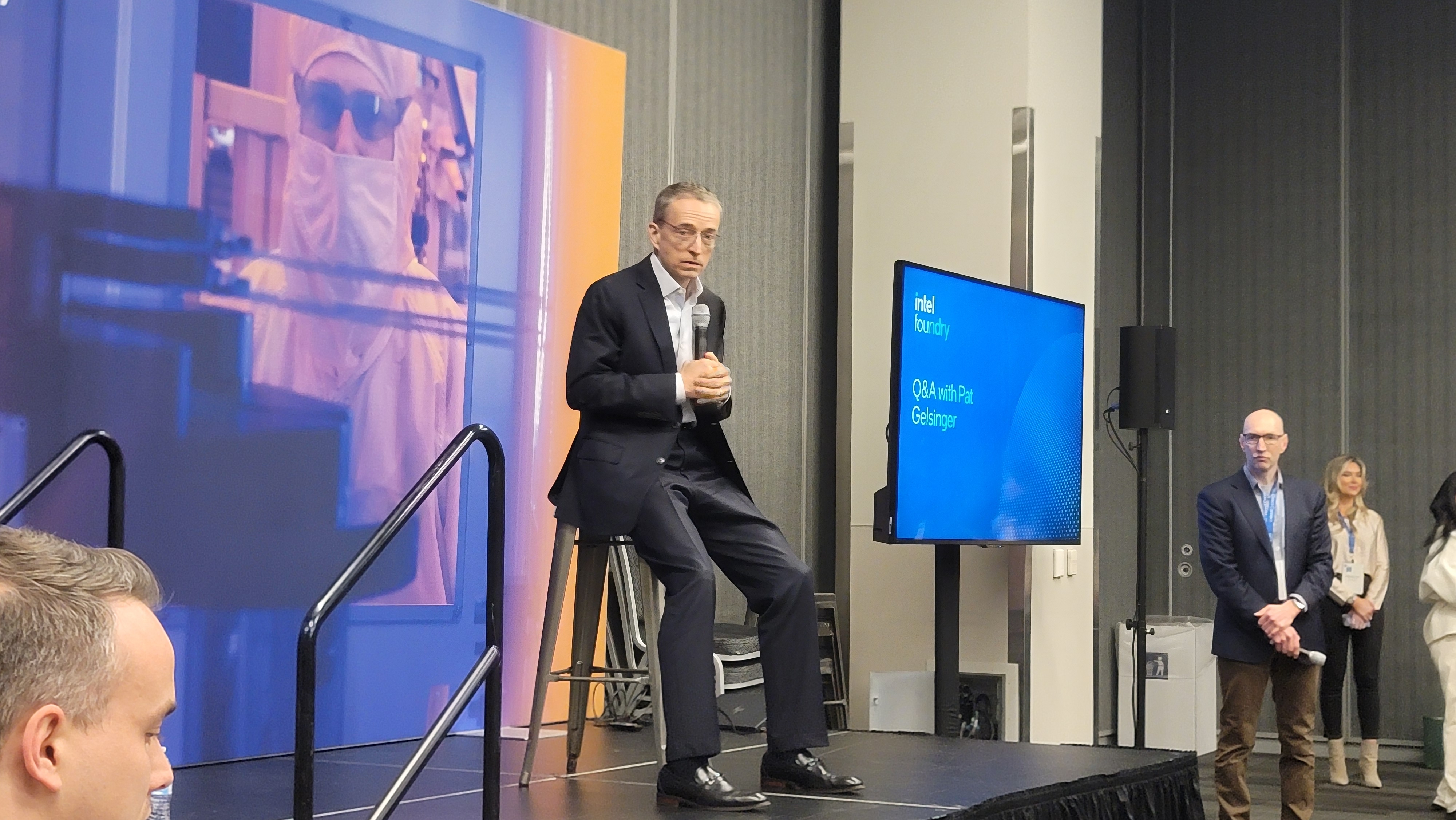
Intel CEO Pat Gelsinger held a question and answer session here today at the company’s IFS Direct Connect, and in response to one of our questions, he reiterated that Intel is willing to build chips for anyone — including long-time rival AMD.
Intel Foundry will not only build chips for external customers using Intel’s crown jewel process nodes, but also the full complement of all of its IP, including its leading-edge packaging technology. That raises the question of how the company would deal with competitors that are armed with its very own technology – and perhaps beating Intel’s own internal product teams with better processor designs. While Gelsinger didn’t answer my entire question, he certainly gave us plenty to ponder.
“Intel will now offer its process nodes to some of its competitors, and there may be situations wherein your product teams are competing directly with competitors that are enabled by your crown jewels,” I asked. “How do you plan to navigate those types of situations and maybe soothe ruffled feathers on your product teams?”
“Well, if you go back to the picture I showed today, Paul, there are Intel products and Intel foundry, There’s a clean line between those, and as I said on the last earnings call, we’ll have a setup separate legal entity for Intel foundry this year, ” Gelsinger responded.”We’ll start posting separate financials associated with that going forward. And the foundry team’s objective is simple: Fill. The. Fabs. Deliver to the broadest set of customers on the planet.”
“We hope that that includes Jensen (Nvidia), Christiano (Qualcomm), and Sundar (Google), and you heard today it includes Satya (Microsoft), and I even hope that includes Lisa (AMD) going forward. I mean, we want to be the foundry for the world, and if we’re going to be the Western foundry at scale, we can’t be discriminating about who’s participating in that. So, unequivocally, it is to be the foundry for the world. Commit supply chains, your leadership technology – the doors to the ala carte menu are wide open for the industry.”
“And some of those [garbled] that we build, like Clearwater Forest that I showed today, hey, that’s a construct that was innovated by my Xeon team: How to do hybrid bonding, Intel 3 base die, Intel 18A top die, being able to solve a lot of the CoWoS/Foveros problems using EMIB and hybrid bonding. That will become a set of collaterals that will benefit the foundry team. They’re going to go sell that constructional opportunity as a better way to build AI chips. So clearly, I’m taking product group intellectual property and leveraging it on the foundry side of the business.”
While this may seem to be counterintuitive, it isn’t entirely unexpected: Intel is opening its doors to the industry at large with the goal of being ‘the world’s foundry,’ and Gelsinger has previously stated his desire to work with everyone in the industry and named names.
There were other signs of cats and dogs living together at the Intel Foundry event, too: Intel Foundry head Stu Pann called long-time rival Arm the company’s most important customer, and then invited Arm CEO Rene Haas to the stage for a joint presentation. We certainly couldn’t have seen that coming five years ago. In fact, Intel is already working on fabbing Arm Neoverse processors.
In case you thought Gelsinger wasn’t being clear, he doubled down on the statement in a later answer, saying, “So I want my foundry to be used by everybody. Period. We want to help build Nvidia chips, and AMD chips, and TPU chips for Google, and inference chips for Amazon. Period. We want to help them and give them the most powerful, performant, and efficient technologies for them to build their systems. Period. Full stop.”
Gelsinger outlined the rest of his rationale in his extended response to my question.
“I also expect some customers are going to say hey, I really liked some of those Intel products, but I want it with a different chiplet that I do. And we’re gonna say yes to that. Great. Let’s go build unique versions of Clearwater Forest, and we’ll put your security chip on it or some other IO chip or networking component as well. We definitely see both complementing each other and we’re gonna have soft, hard, and chiplet-based IP that we’ll produce that’ll be available for our foundry customers as well going forward. But ultimately, we have to build and earn the trust of the foundry customer. And for that, it’ll be the best of Intel’s available to them, and their intellectual property and supply chains will be protected and contractually committed to,” Gelsinger said.
Gelsinger’s desire to serve all customers comes as the company appears to be on track to regain its process node leadership over TSMC next year. With the goal of five nodes in four years nearly completed, the new Intel certainly doesn’t look much like the old Intel that floundered for several years through its missteps on the 10nm node, ultimately losing its crown to TSMC.





